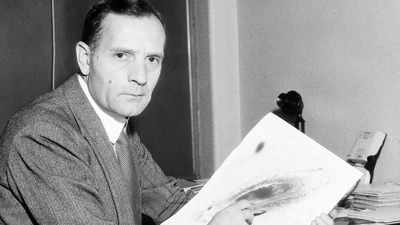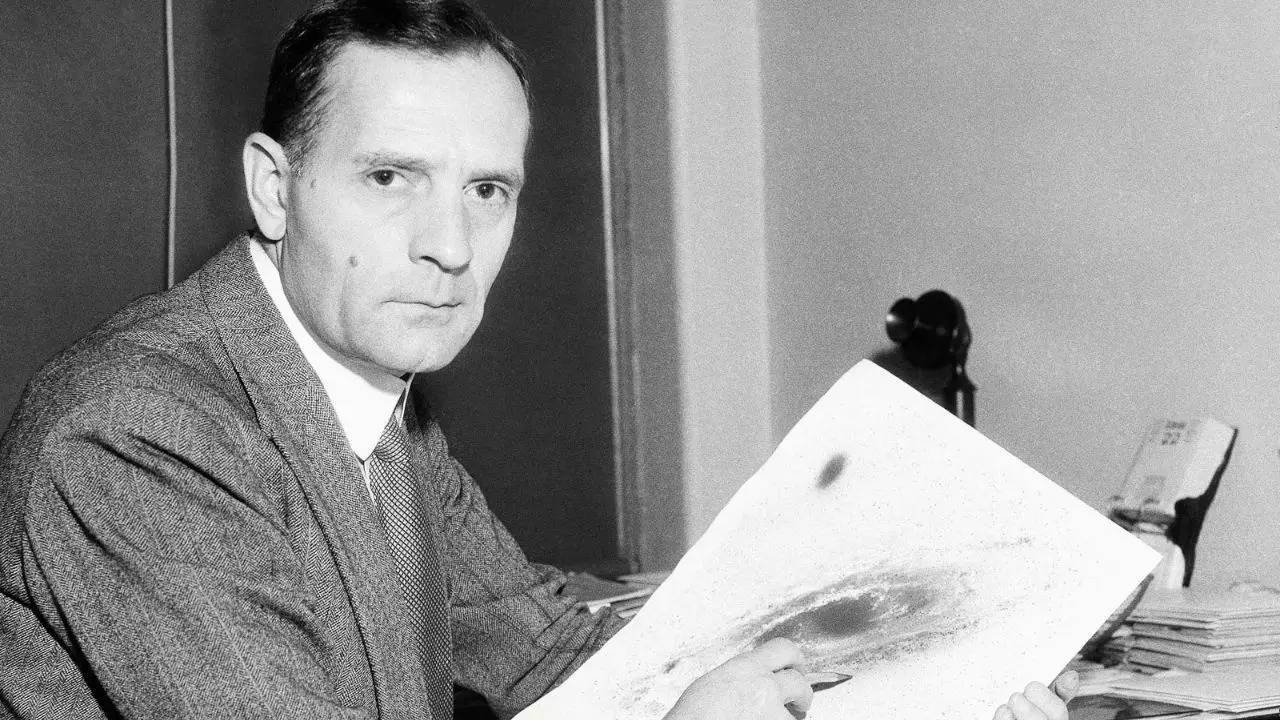Meet Edwin Hubble, who revolutionised astronomy and expanded the universe
When you think of Hubble, the iconic
Hubble Space Telescope
likely comes to mind—a groundbreaking instrument that has revolutionised our understanding of the cosmos since its launch in 1990. Named after
Edwin Hubble
, one of the greatest astronomers of the 20th century, the telescope embodies his pioneering spirit and transformative contributions to astronomy.
Born in 1889 in Marshfield, Missouri, Edwin Hubble fundamentally changed our view of the universe by proving the existence of galaxies beyond the Milky Way and demonstrating that the universe is expanding—a discovery that forms the cornerstone of modern
cosmology
.
At the Mount Wilson Observatory, Hubble used the 100-inch Hooker Telescope to uncover the secrets of distant galaxies and laid the foundation for the Big Bang Theory. Today, his legacy endures, inspiring exploration through the telescope that proudly bears his name.
Edwin Hubble’s journey: From law to astronomy
Born on November 20, 1889, in Marshfield, Missouri, Hubble grew up excelling in both academics and athletics. Despite his passion for science, he initially followed his father’s wishes, earning a law degree from the University of Oxford as a Rhodes Scholar.
However, after his father’s passing in 1913, Hubble returned to his true calling. He earned a Ph.D. in astronomy from the University of Chicago in 1917. After serving in World War I, Hubble began working at the Mount Wilson Observatory, home to the world’s largest telescope at the time. This marked the start of a career that would forever redefine humanity’s understanding of the cosmos.
Edwin Hubble discovered a universe beyond Milky Way
In 1919, Hubble joined the Mount Wilson Observatory in California. Using the 100-inch Hooker Telescope, he focused on faint, cloud-like nebulae, uncovering secrets that reshaped cosmology.
One of Hubble’s most groundbreaking discoveries came in 1923, when he observed the
Andromeda Nebula
. By identifying a Cepheid variable star, he proved that the nebula was not part of the Milky Way but a galaxy of its own. This discovery showed that the universe was far larger than anyone had previously imagined.
Hubble further revolutionised astronomy with the “Hubble Classification Scheme,” which categorises galaxies into spiral, elliptical, or irregular shapes. This system remains a cornerstone of modern astronomy, aiding our understanding of galaxy formation and evolution.
Hubble’s expanding universe and Hubble’s law
In 1929, Hubble redefined humanity’s place in the cosmos by demonstrating that galaxies are moving away from each other, with their speed proportional to their distance. This phenomenon, known as Hubble’s Law, was based on his studies of the redshift of galaxies and provided the first observational evidence of the universe’s expansion—a critical element of the Big Bang Theory.
Hubble’s discovery proved that the universe was not static but an ever-expanding and dynamic realm, containing countless galaxies. This revelation laid the groundwork for modern cosmology and transformed our understanding of the universe’s origins and evolution.
Edwin Hubble’s legacy lives on
Hubble’s classification system for galaxies, known as the “Hubble Tuning Fork,” remains a cornerstone of modern astronomy. His contributions inspired generations of scientists and paved the way for future discoveries.
Though he passed away in 1953, his legacy lives on. The Hubble Space Telescope, launched in 1990, honours his vision by capturing stunning images and deepening our understanding of the cosmos. Its mission embodies Hubble’s enduring words: “The search will continue. Not until the empirical resources are exhausted, need we pass on to the dreamy realms of speculation.”
Edwin Hubble’s life and work remind us that curiosity and perseverance can propel humanity to unimaginable heights, revealing the vastness and beauty of the universe we call home.
Also Read | Solar Orbiter captures high-resolution images of the Sun, unveiling new mysteries | See pics
I’m Manas Ranjan Sahoo: Founder of “Webtirety Software”. I’m a Full-time Software Professional and an aspiring entrepreneur, dedicated to growing this platform as large as possible. I love to Write Blogs on Software, Mobile applications, Web Technology, eCommerce, SEO, and about My experience with Life.






